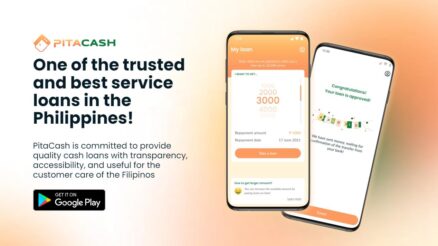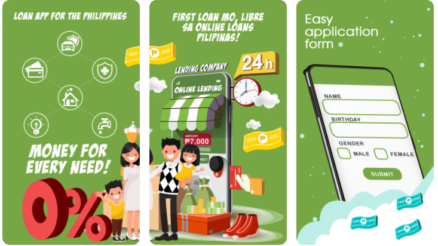Online loans have become a popular solution for Filipinos facing urgent financial needs – from medical emergencies and tuition fees to business capital. The ease of applying via mobile apps or websites makes borrowing more accessible than ever. However, this convenience also opens the door to a rising wave of online loan scams that exploit vulnerable borrowers.
In 2025, with the increasing sophistication of scammers in the Philippines, recognizing the signs of online loan fraud and knowing how to take action is no longer optional – it’s a financial survival skill. CashLoanPH will help you understand how these scams work, how to detect red flags, and most importantly, how to report abusive or illegal lenders to protect yourself and others.
The New Face of Online Loan Scams in the Philippines
Online lending scams often disguise themselves as legitimate fintech apps or websites. Their offers can be convincing: fast approval, zero credit checks, low-interest rates, and minimal requirements. But behind these promises lie deceptive tactics that can lead to harassment, financial ruin, and even identity theft.
Types of Online Loan Scams
The Predatory Loan App
These apps operate without SEC registration or legal authority. They trap borrowers with:
- Sky-high daily or weekly interest rates that snowball into unmanageable debt.
- Hidden fees not disclosed at the beginning, making the loan cost far more than expected.
- Harassment and data abuse, where the lender accesses your contacts, photos, or SMS and threatens public shaming if you miss a payment.
The Advance Fee Scam
You’re promised a loan but must first pay a “processing fee,” “insurance,” or “tax.” Once the fee is sent, the scammer disappears. No loan is ever released.
The Identity Harvesting Scam
Fake loan forms or websites ask for your personal details – full name, ID, address, bank account – under the guise of loan approval. Your data is then sold or used for identity theft and financial fraud.
Smishing and Phishing Scams
These involve unsolicited messages (SMS or email) offering fake loans. Clicking the link can:
- Lead to fake websites that steal login details.
- Install malware on your device to hijack sensitive information.
Spotting Red Flags: How to Identify a Loan Scam Before It’s Too Late
Protecting yourself starts with knowing what to look for. Here are the most common signs of an online lending scam:
✅ No SEC Certificate of Authority
Legitimate lenders in the Philippines must be registered with the Securities and Exchange Commission (SEC) and possess a Certificate of Authority (CA). You can verify a lender’s legal status directly at www.sec.gov.ph.
🚨 Excessive App Permissions
Be wary of apps that request access to:
- Contact list
- SMS messages
- Call logs
- Photo gallery
- Social media accounts
These permissions are often abused to harass and shame borrowers.
🚩 Upfront Fees Required
Any lender that asks for a payment before loan disbursement is likely a scam. Legitimate lenders deduct fees from the loan itself, not from your pocket upfront.
❌ Guaranteed Approval or No Credit Check
Legit loan providers assess your creditworthiness. If someone says “guaranteed approval” regardless of your income or credit record, it’s likely bait.
🤐 Vague or Hidden Loan Terms
If a lender hides the true cost of borrowing – such as not disclosing the effective interest rate or repayment schedule – walk away.
📞 Aggressive or Threatening Communication
If you’re being pressured to apply quickly or threatened even before getting the loan, this is a red flag for abusive behavior during collections.
🏢 No Verifiable Contact Information
Lenders that don’t provide a valid business address or use free email providers (like Gmail or Yahoo) may be trying to avoid accountability.
💻 Unprofessional App or Website
Misspelled words, low-quality graphics, and confusing interfaces often indicate a rushed or fraudulent app made only to trap victims.
📩 Unsolicited Offers via SMS or Email
Receiving random messages offering instant loans is a classic sign of phishing or smishing attempts.
How to Report Online Lending Scams in the Philippines
If you’ve encountered a suspicious lender or already fallen victim, don’t stay silent. Reporting protects you and others from further harm. Here’s where and how to report:
Report to the SEC (Securities and Exchange Commission)
When to Report:
- Unregistered lenders or apps
- Excessive interest rates
- Harassment and illegal collection tactics
How to Report:
- Gather evidence: Screenshots, app name, abusive messages, loan agreements, etc.
- Use the SEC Online Complaint Form at www.sec.gov.ph
- Or email your complaint to:
- [email protected] (Enforcement and Investor Protection)
- [email protected] (Corporate Governance and Finance Dept)
- You can also submit a complaint in person at the SEC main office or regional branches.
Report to the NPC (National Privacy Commission)
When to Report:
- Unauthorized access to your phone’s data (contacts, SMS, photos)
- Public shaming using your personal data
- Violations of the Data Privacy Act of 2012 (RA 10173)
How to Report:
- Collect screenshots of permissions, shaming messages, or privacy violations.
- File a complaint online via www.privacy.gov.ph
- Or email: [email protected]
Report to Google Play or Apple App Store
Help get the abusive app removed.
For Android:
- Open the app’s page on Google Play.
- Scroll to “Flag as inappropriate” → Choose a reason like “Harassment” or “Financial Fraud.”
For iOS:
- Go to the app’s page in the App Store.
- Tap “App Support” or visit reportaproblem.apple.com
Report to CICC and PNP Anti-Cybercrime Group
For serious cases involving criminal fraud, extortion, or threats:
- CICC: File complaints at www.cicc.gov.ph
- PNP-ACG: Report via www.pnpacg.ph or visit a police station
Preventive Tips to Stay Scam-Free
Prevention is the best protection. Practice these safety habits to stay clear of loan traps:
- ✅ Verify Lenders Before Applying: Check SEC registration.
- ✅ Read and Understand Terms: Know your interest rates, penalties, and payment schedule.
- ✅ Limit App Permissions: Grant only essential access.
- ✅ Don’t Share Personal Info: Unless you’ve confirmed the lender’s legitimacy.
- ✅ Be Informed: Follow regulatory warnings from the SEC, BSP, and NPC.
- ✅ Report Suspicious Apps and Messages Immediately
Final Thoughts: Protecting Yourself and Others Starts Now
As digital lending continues to rise, so do the threats to borrowers who simply want to solve a financial problem. While many online lenders in the Philippines are legitimate, scammers are getting smarter – and bolder.
Your first line of defense is education. Know the red flags, verify before you apply, and don’t hesitate to report abusive or illegal behavior. By doing so, you’re not just protecting your finances – you’re helping clean up the digital lending space for everyone.
Remember: If it feels wrong, it probably is. Stay alert. Stay informed. Stay safe.




